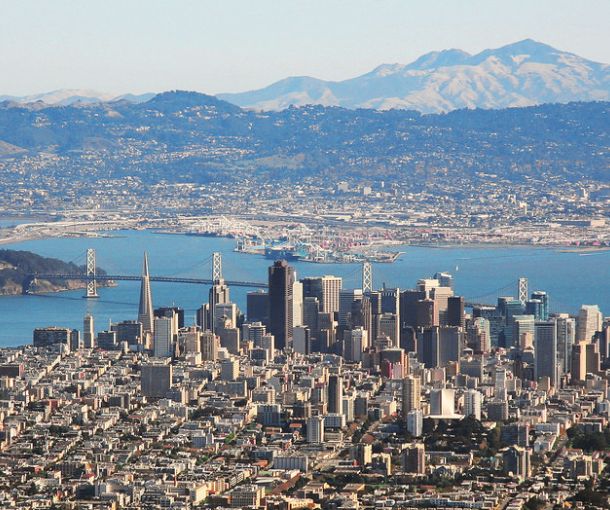How to Move to Alaska: The Complete Guide

Planning to pack up and head to America’s last frontier? Moving to Alaska isn’t like moving to any other state — you’ll need to prepare for unique challenges and adventures ahead. Let’s break down everything you need to know about making Alaska your new home.
The Basics of Moving to Alaska
You can’t just load up a U-Haul and drive to Alaska like you would for most other state-to-state moves. Since Alaska is separated from the continental U.S. by Canada, you’ll need to plan your route carefully, prepare proper documentation, and have a proper long-distance moving company set up.
There are three main ways to get to Alaska:
- Drive through Canada (you’ll need a passport)
- Take a ferry up the coast
- Fly directly to your destination
If you’re driving, you’ll take the Alaska Highway (also called the Alcan) through British Columbia and the Yukon Territory. The trip from Seattle to Anchorage spans about 2,200 miles and takes 4-6 days in good weather. Spring and summer are the best times to make this journey — winter driving can be treacherous.
The Alaska Marine Highway System offers another interesting option. You can board a ferry in Bellingham, Washington, and sail up the coast. The journey takes about three days to reach Southeast Alaska, and you can bring your vehicle along. It’s pricier than driving but lets you skip the long road trip through Canada.
What it Really Costs to Live in Alaska
Living in Alaska comes with some serious perks, but it’s not cheap. The cost of living runs about 16.5% higher than the national average. Here’s what you should budget for:
Groceries cost more since most food gets shipped in from the lower 48. A gallon of milk might set you back $4-5, and fresh produce prices can shock newcomers. That said, if you learn to fish and hunt, you can offset some food costs. Many residents get fishing licenses and fill their freezers with salmon and halibut.
Housing costs stay pretty close to the national average — you can find a decent home for around $350,000 in many areas. Rent averages $1,800 in Anchorage and $1,575 in Fairbanks. Remote areas can vary wildly — some bush communities have sky-high prices while others offer surprising deals.
The real budget-buster? Utilities. Alaska’s electricity rates run nearly 24 cents per kilowatt-hour compared to the U.S. average of 15 cents. Those long, dark winters mean lots of electricity use. Heating costs pack a punch too — many homes use heating oil, which fluctuates in price but often runs $4-5 per gallon.
Gas prices typically run about 75 cents higher per gallon than the national average. In remote areas, you might pay double what folks in the lower 48 states do.
The Money-Saving Side of Alaska Life
It’s not all budget-breaking news — Alaska offers some unique financial benefits:
The state pays you to live there through the Permanent Fund Dividend (PFD). Once you’ve lived in Alaska for a full calendar year, you’ll get an annual payment that typically ranges from $1,000 to $2,000. You’ll need to intend to remain in Alaska indefinitely to qualify.
Alaska has no state income tax or state sales tax. Some cities charge local sales tax, but Anchorage doesn’t. Property taxes run slightly below the national average at about 1.02%. These tax savings can add up to thousands each year for the average family.
Many employers offer “Alaska premium pay” — higher wages to offset the cost of living. This is especially true in healthcare, education, and oil industry jobs.
Using a moving app like Agoyu can help with saving money as well. We can help connect you with the best and most affordable movers to help with the big move to Alaska.
Need Movers? Your Move, Your Choice

Instant Exact Cost for Your Specific Move
Agoyu’s AI technology give you quick, precise estimates. Scan your room, receive instant quotes from multiple movers, and confidently select the best option for you.
STEP 1 OF 3
STEP 2 OF 3
or Have a Top Mover Call Me Now!
Do it the old fashion way! A top mover will call you to provide an instant quote over the phone or at your house!
Choosing Where to Live
Your Alaska experience will vary dramatically based on where you settle. Here’s a quick rundown of popular spots:
Anchorage: The big city option with about 290,000 residents. You’ll find the most job opportunities and amenities here, plus relatively mild winters by Alaska standards. The city sits between mountains and ocean, offering easy access to outdoor recreation while maintaining urban conveniences.
Fairbanks: A smaller city of about 30,000 that offers a more authentic Alaska experience. Winters get seriously cold (think -40°F), but you’ll catch amazing views of the Northern Lights. The University of Alaska Fairbanks brings a college town vibe and cultural activities.
Juneau: The state capital isn’t connected to the road system — you’ll need planes or boats to get in and out. But it offers stunning scenery and a tight-knit community of about 32,000. The tourism industry creates lots of seasonal jobs, and government work provides year-round opportunities.
Mat-Su Valley: This fast-growing region includes Palmer and Wasilla. It’s close enough to commute to Anchorage but offers more space and lower housing costs. You’ll find a mix of farming communities and suburban developments.
Remote living: If you dream of living off the grid, Alaska’s got plenty of options. Just make sure you’re prepared for the challenges of bush life — like generating your own power, hauling water, and possibly going without internet access.
Getting a Job in Alaska
The job market in Alaska centers around several key industries:
- Oil and gas — offering some of the highest-paying jobs in the state
- Tourism and hospitality — especially strong from May to September
- Healthcare — always in demand, particularly in rural areas
- Government — stable work with good benefits
- Fishing — commercial and sport fishing create thousands of jobs
- Construction — busy during the summer building season
- Transportation and logistics — critical for moving goods throughout the state
Before moving, try to line up work in your field. The state’s unemployment rate tends to run slightly higher than the national average.
Many folks start with seasonal work in tourism or fishing to get their foot in the door. These jobs let you test out Alaska life before making a permanent move. National parks, fishing lodges, and cruise ship operations often hire seasonal workers from the lower 48.
Remote work is becoming more common too. If you can keep your current job and work remotely, you might have the best of both worlds — a steady income while experiencing Alaska life.
What to Bring (And What to Leave Behind)
Pack smart for your Alaska move:
Quality winter gear tops the list — we’re talking serious winter coats, boots rated for sub-zero temperatures, and lots of layers. Brands like Carhartt and XTRATUF are Alaska staples. Don’t waste money on trendy clothes; Alaskans dress for function over fashion.
If you’re into outdoor activities, bring your gear. Hiking boots, camping equipment, and fishing gear will get plenty of use. Quality outdoor gear costs more in Alaska, so bring what you have.
Car essentials include:
- Engine block heater
- Battery blanket
- Snow tires
- Good ice scraper
- Emergency winter survival kit
Consider leaving behind:
- Formal wear (unless required for work)
- Delicate furniture that won’t handle extreme temperatures
- Plants (many won’t survive shipping or the climate)
- Cars that aren’t winter-ready
- Anything you haven’t used in the past year — moving to Alaska is a great excuse to downsize
Another thing… If you’re planning to ship your car, make sure you hire a reputable company with experience in long-distance car shipping. We have a bunch in the Agoyu app that you can connect with for free!
Planning Your Actual Move
You’ve got several options for getting your stuff to Alaska:
Moving containers offer a good middle ground between cost and convenience. Companies like U-Pack will drop off containers, then ship them to Alaska while you handle the packing and unpacking. Expect transit times of 2-3 weeks to major cities.
Full-service movers cost more but handle everything. They’ll pack, ship, and deliver your belongings — ideal if you’re short on time or moving to a remote area. Some companies specialize in Alaska moves and understand the unique challenges.
Freight companies sometimes offer lower rates than traditional movers. They’re cheaper but might not handle your items as carefully. Make sure to pack everything extra securely if you go this route.
The postal service can be surprisingly cost-effective for shipping boxes, especially with their flat-rate options. Some people mail themselves boxes of non-essential items to spread out moving costs.
Preparing for Alaska Life
The adjustment to Alaska living takes time. Here’s what to expect:
The daylight situation might throw you off at first. Summer brings nearly 24 hours of light in some areas, while winter days can be mostly dark. Consider getting a light therapy box for those long winter nights. Blackout curtains help you sleep during bright summer evenings.
Wildlife encounters happen regularly. Bears and moose wander through neighborhoods, and you’ll need to learn proper safety protocols. Keep garbage secured, carry bear spray when hiking, and never approach wildlife — no matter how great the photo op might seem.
The weather varies dramatically by region. Coastal areas stay relatively mild but wet, while interior Alaska sees extreme temperature swings. Anchorage averages 75 inches of snow annually, while some areas get much more.
Making the Transition Easier
Some tips to help you settle in:
Join local Facebook groups or online communities before moving. You’ll get insider tips and maybe make some friends before arriving. Groups focused on your specific area can help with everything from housing leads to restaurant recommendations.
Get involved in winter activities — cross-country skiing, ice fishing, or snowmachining (that’s what Alaskans call snowmobiling). Staying active helps beat the winter blues. Many communities offer lessons and rental gear for beginners.
Learn to love the outdoors. Alaska offers world-class hiking, fishing, and camping. These activities help offset the high cost of living and let you experience what makes Alaska special. Start with guided tours or join local outdoors clubs to learn the ropes safely.
Final Steps Before Moving
Take care of these details before heading north:
Update your driver’s license within 90 days of moving. You’ll need to pass a written test on Alaska driving laws. The test includes questions about driving in snow and ice conditions.
Register to vote at your new address. Alaska makes this easy to do when you get your driver’s license.
Get your vehicle ready for Alaska roads — this might mean snow tires, an engine block heater, and other winter-specific gear. Find a mechanic who specializes in winterizing vehicles.
File for your PFD as soon as you’re eligible. The application period runs January through March each year. Keep detailed records of when you arrived in the state — you’ll need them for your application.
Connect with your new community. Alaskans are known for helping neighbors, especially during tough winter months. Don’t be shy about introducing yourself and getting involved in local events.
Moving to Alaska isn’t simple, but with proper planning, you can make this unique adventure work. Just remember — take time to research, prepare for the costs, and embrace the lifestyle changes ahead.
Many people fall in love with Alaska’s wild beauty and tight-knit communities, never wanting to leave the Last Frontier. Make sure to get a moving quote before you book with a local company too!


